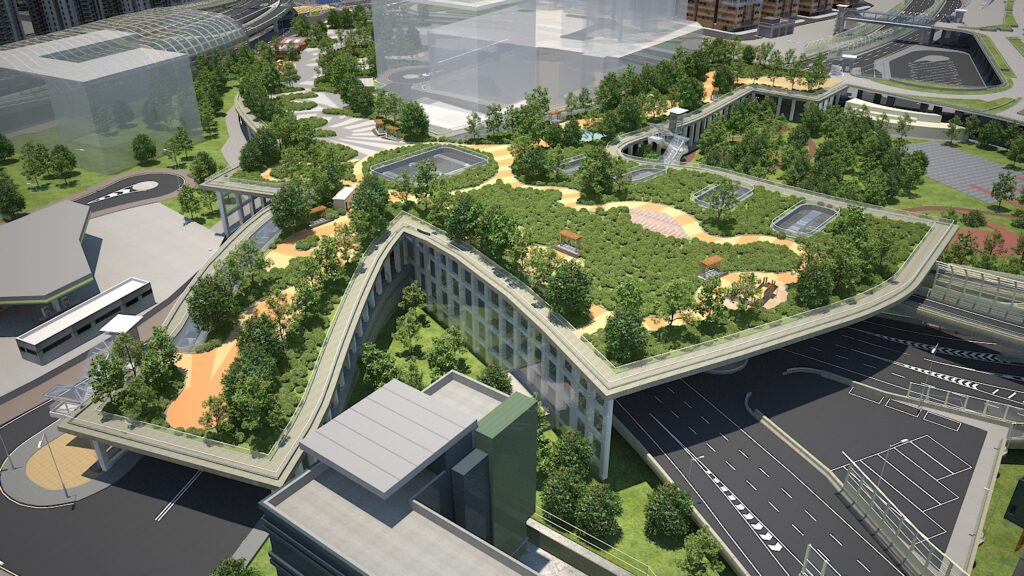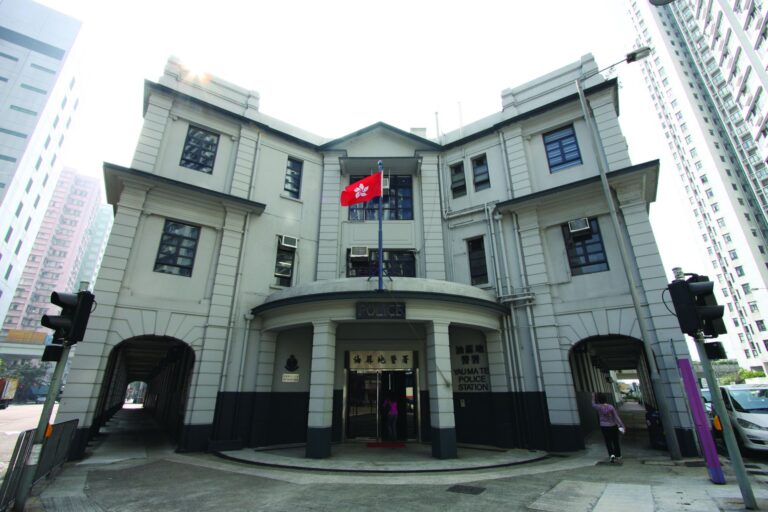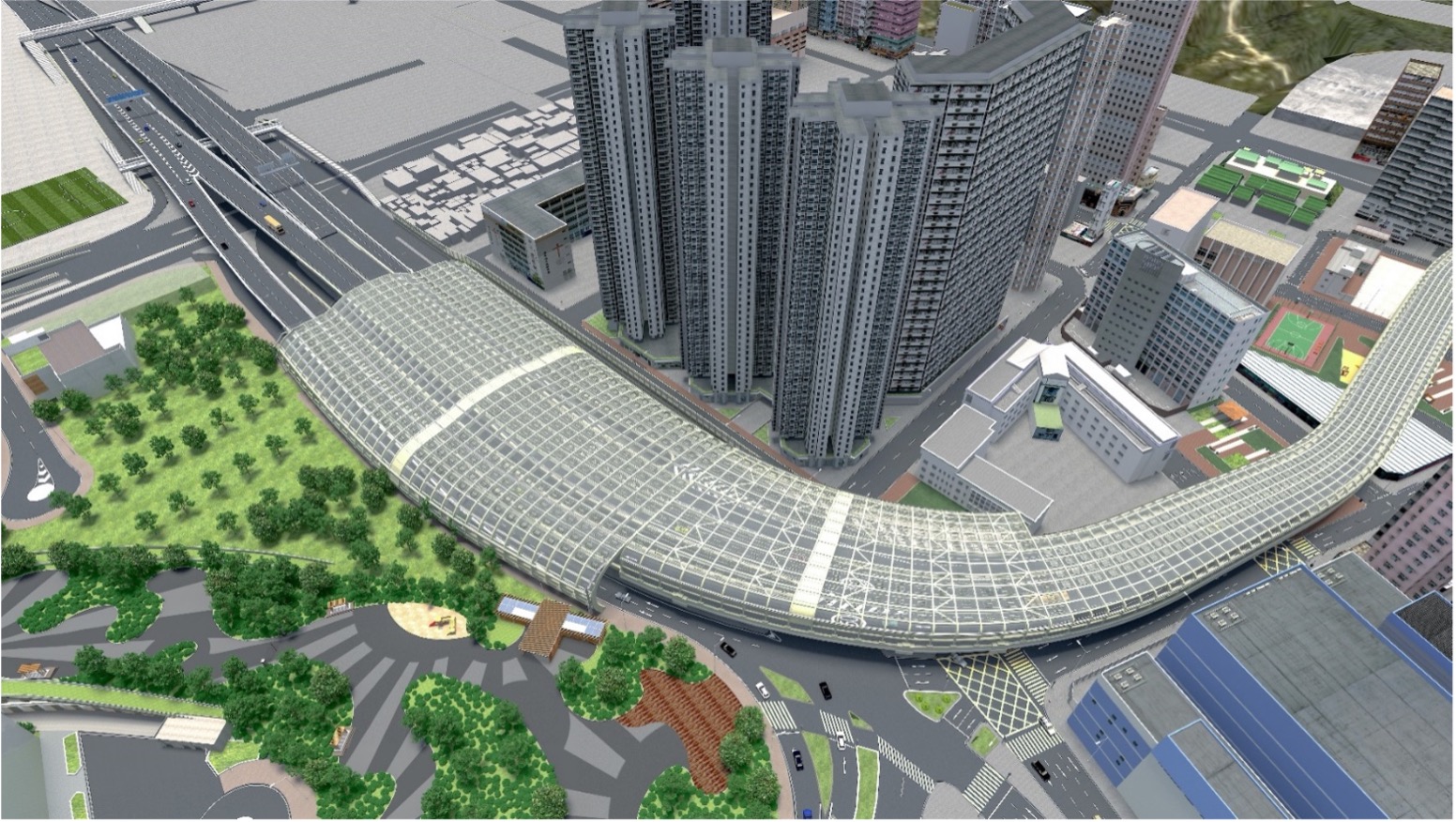Benefit
Relief of traffic congestion and improvement of community environment by greening and landscaping, re-provision of public facilities and conservation of cultural heritage.

Relief of Traffic Congestion
Central Kowloon Bypass (Yau Ma Tei Section) is an alternative express route.
Currently the east-west traffic movements across central Kowloon are primarily served by Lung Cheung Road, Boundary Street, Prince Edward Road West, Argyle Street, Waterloo Road, Gascoigne Road Flyover and Chatham Road North, which are already close to/over their full capacity at peak hours. Traffic congestion also poses difficulties for vehicles from local road networks merging into these major corridors, leading to congestion in adjacent areas.
Central Kowloon Bypass (Yau Ma Tei Section), as an alternative express route bypassing the congested central Kowloon area, significantly reduces the journey time. Upon commissioning, the journey time between Yau Ma Tei and Kowloon Bay during peak hours is expected to be shortened from 30 minutes to about 5 minutes only. The Central Kowloon Bypass (Yau Ma Tei Section) will also alleviate the traffic congestion by substantially reducing the traffic volumes at the currently congested major east-west transport corridors. It also brings similar benefits to the neighbouring areas including Wong Tai Sin, Ho Man Tin and Kowloon City.

















Greening and Landscaping
Greening will be provided in conjunction with the construction of Central Kowloon Bypass (Yau Ma Tei Section) to improve the environment in the vicinity.


Conceptual Image(Design Stage)

Yau Ma Tei Landscaped Deck
A landscaped deck of about 250m-long from east to west and 270m-long from south to north will be constructed above the western tunnel portal of CKR, covering the CKR depressed road and the section of Hoi Wang Road between Yan Cheung Road and Lai Cheung Road providing with additional greenery. It will also be connected with the landscaped deck of the West Kowloon Station of Guangzhou-Shenzhen-Hong Kong Express Rail Link (Hong Kong Section) to form a grade-separated pedestrian route between Yau Ma Tei and the station, serving as a sitting-out area for public enjoyment.
Reprovisioning of Public Facilities
Several public facilities along the CKR alignment will be reprovisioned to facilitate the construction works.

Yau Ma Tei Police Station
Yau Ma Tei Jade Hawker Bazaar
Yau Ma Tei Public Library
Yau Ma Tei Public Library and Yau Ma Tei Jade Hawker Bazaar are also relocated to a new building temporarily located in the rest area at the south of Henry G. Leong Yau Ma Tei Community Centre.
Yau Ma Tei Maternal and Child Health Centre
The facilities of Department of Health provided in the Yaumatei Specialist Clinic building, including Dermatological Clinic and the Methadone Clinic were reprovisioned in the adjacent Yau Ma Tei Jockey Club Polyclinic.
The Maternal and Child Health Centre was temporarily reprovisioned at Yau Cheung Road and started operation in the 2nd quarter of 2020.

Preservation of Cultural Heritage
The CKR project involves several sites of conservation value and character in the district, and the project team will endeavour to preserve the affected heritage and distinctive landmarks.

Conservation of former Yau Ma Tei Police Station
The Former Yau Ma Tei Police Station is a Grade 2 Historic Building. The Central Kowloon Bypass (Yau Ma Tei Section) tunnel alignment has been designed to avoid encroaching on the Old Wing of the Police Station, while the New Wing can be preserved through underpinning works.

Temple Street Night Market
Since the tunnel alignment passes through the Yau Ma Tei Car Park Building, the building has to be demolished to facilitate the construction works. During the construction period, covered hoardings and walkways are installed on the periphery of the building along the Temple Street and Shanghai Street to ensure pedestrian safety and avoid disruption to night market activities.

Kowloon City Ferry Pier and Kowloon City Vehicular Ferry Pier
The Kowloon City Passenger Ferry Terminal and Kowloon City Car Ferry Terminal (Marine section) are located along the To Kwa Wan coastline, adjacent to the CKR – Kai Tak West works site. To monitor and ensure that these structures are not affected by the tunnel works, the Contractor has implemented proper mitigation measures in compliance with the contract requirements. This includes the provision of a suitable pontoon system to maintain the operation of the pier during Stage 2 temporary reclamation and underwater tunnel construction works.
A Heritage Impact Assessment has been conducted for the Graded Historic Buildings, in accordance with the guidelines provided by relevant departments. The assessment results indicate that the construction and operation of the CKR project would not impose insurmountable impacts on the structures, provided that proper mitigation measures are in place.

Environmental Measures
Three ventilation buildings will be constructed in Yau Ma Tei, Ho Man Tin and Kai Tak Development Area under the CKR project. Each ventilation building will be equipped with an advanced air purification system which will effectively filter at least 80% of the nitrogen dioxide and respirable suspended particulates from vehicular exhaust of tunnel traffic . Furthermore, the CKR mainly consists of tunnel and together with its function as an alternative expressway, it can significantly reduce the at-grade traffic and congestion, thereby reducing air and noise nuisances generated by vehicles, hence bringing overall environmental improvement.

The CKR strives to reduce its impacts on the environment and improve environmental quality throughout its planning, design and construction stages. Assessment for the Hong Kong Green Building Council’s BEAM Plus New Buildings Version 2.0 will be carried out for the Kai Tak Administration Building, and it aims to obtain the Platinum rating by achieving an overall score of over 75 in specified performance aspects, including energy use, health and well-being, integrated design and construction management, sustainable sites, materials and waste, water use, and innovations and additions. The building has attained the Platinum Rating in the Provisional Assessment under the “BEAM Plus New Buildings Version 2.0” by the Hong Kong Green Building Council in August 2023.
The construction of Kai Tak Administration Building and ventilation buildings will adopt prefabrication technology and will use sustainable forest products, recycled and regionally materials, green products, and ozone-depleting-substance-free materials as far as practicable. In the planning and design stages, the adoption of renewable energy, natural lighting, and rainwater irrigation system for greenery have been considered to reduce electricity and water consumption.

